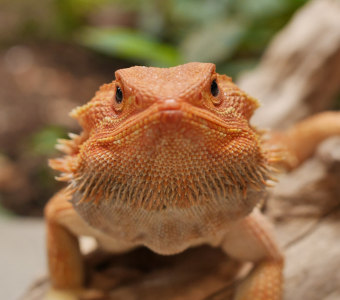Live Mealworms vs Dried Mealworms
Which Is Better for Your Reptile or Garden Birds?
If you keep reptiles or feed wild birds, you’ve probably come across live mealworms and dried mealworms. Both are popular, protein, rich food sources, but they offer very different benefits. Choosing the right one can make a real difference to your animals’ health, diet, and feeding behaviour.
In this guide, we’ll compare live mealworms and dried mealworms side by side, so you can decide which option is best for your reptiles, including bearded dragons, geckos, lizards, tortoises, and for garden birds too.


What Are Live Mealworms?
Live mealworms are the larval stage of the darkling beetle. They’re one of the most popular choices for anyone feeding reptiles or birds because they’re natural, nutritious, and instinctively appealing.
Benefits of live mealworms:
- High in protein and moisture, ideal for hydration and growth.
- Stimulate natural hunting behaviour in reptiles like bearded dragons and geckos.
- A reliable option for anyone looking for live food for reptiles.
- Perfect for attracting birds to the garden as part of a protein-rich diet.
Keep in mind that live mealworms require a little care, they need to be stored correctly and fed occasionally to keep them healthy. But the nutritional value and enrichment they provide often make the extra effort worth it. Click here to read our mealworm care sheet.
What Are Dried Mealworms?
Dried mealworms for birds are simply live mealworms that have been dehydrated. They’re still a great source of protein but are easier to store and handle, making them especially popular with bird feeders.
Benefits of dried mealworms:
- Long shelf life and no maintenance required.
- Easy to mix with seed or scatter on bird tables.
- Great for year-round feeding, especially in colder months.
- More cost-effective than live mealworms.
Tip: Soaking dried mealworms in warm water before feeding can help restore some moisture and make them more appealing, especially if you’re researching live food for bearded dragons or what to feed a leopard gecko.
Which Is Better for Reptiles?
For most reptiles, live mealworms are the better option. Their movement encourages natural feeding behaviour, and they provide vital hydration. They’re a staple part of a balanced diet and a reliable source of live reptile food.
Dried mealworms can still be useful, for example, as an occasional treat or if you want to simplify feeding while still offering a source of protein.
If you’re unsure about feeding habits, consider the natural diets of your reptiles:
- What do geckos eat? Small moving insects like live mealworms.
- What can bearded dragons eat? A mix of live insects and vegetables.
- What do tortoises eat? Mainly vegetation, but they can benefit from insect protein occasionally.
Which Is Better for Birds?
When feeding birds, both have their place. Mealworms for birds are packed with protein and energy, while dried mealworms for birds are simple to store and use.
- Choose live mealworms during breeding season, their moisture supports chick development.
- Use dried mealworms for birds year-round as a convenient supplement to seeds or suet.
Final Thoughts
There’s no single right answer in the live mealworms vs dried debate, it depends on what you’re feeding and why.
- For reptiles, live mealworms are usually the top choice for nutrition, hydration, and natural feeding behaviour.
- For wild birds, dried mealworms are perfect for easy, low effort feeding, while live mealworms provide extra nutrition during demanding times like nesting season.

